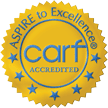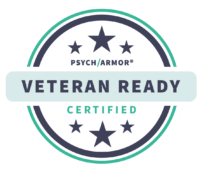Rely on Complementary Wellness Options to Feel Your Best
The National Center for Complementary and Integrated Health (NCCIH) defines whole-person health as “helping individuals, families, communities, and populations improve and restore their health in multiple interconnected domains—biological, behavioral, social, environmental—rather than just treating disease.” This is a vital philosophy in addiction science and one that reinforces key treatment programs, especially at Seabrook.
How Complementary Wellness Options Help Recovery
Holistic therapies are beneficial to your health in general, but they’re especially helpful when you’re managing substance use disorder (SUD) and alcohol use disorder (AUD). The NCCIH offers numerous points of research. Here are just a few:
- Mindfulness practices help Veterans with chronic pain: “In a study of veterans with moderate-to-severe chronic pain, 8-week virtual group or self-paced mindfulness-based interventions were more helpful than usual care in improving pain-related function.”
- Why “mindfulness-oriented recovery enhancement” provides therapeutic benefits to people with opioid use disorder.
- The effects of yogic breathing on central nervous system health.
The U.S. Department of Veterans Affairs notes that while complementary and even alternative wellness methods aren’t supposed to replace conventional AUD and SUD treatment, they “improve chances of recovery…especially when used in addition to traditional treatments and mutual self-help groups.” This is good news not only for participants in our Tactical Recovery program but also for anyone who wants to have more options for maintaining quality health.
Complementary and Alternative Wellness Options
You’ve probably had a massage or two, or maybe you use a meditation app. Here are some additional complementary and alternative medicine (CAM) possibilities to enhance your health and recovery.
- Acupuncture: A traditional Chinese medicine practice that involves inserting thin needles into specific points on the body to balance energy (Qi) and promote healing.
- Aromatherapy: The use of essential oils from plants for therapeutic purposes, such as stress relief, pain reduction, or mood enhancement.
- Biofeedback: A method that uses monitoring devices to provide real-time feedback on physiological functions, such as heart rate and muscle tension, to help individuals control their body’s responses.
- Brainspotting: A therapeutic approach that identifies specific points in the visual field that correspond to unprocessed trauma, helping individuals access and resolve deeply held emotional pain.
- Chiropractic Care: This therapy focuses on diagnosing and treating mechanical disorders of the spine and musculoskeletal system, primarily through spinal adjustments.
- Cupping Therapy: An ancient technique where cups are placed on the skin to create suction, believed to improve circulation, relieve pain, and promote healing.
- EMDR (Eye Movement Desensitization and Reprocessing): A psychotherapy technique that uses guided eye movements to help individuals process and heal from traumatic memories and distressing emotions.
- Massage Therapy: The manipulation of muscles and soft tissues to relieve tension, improve circulation, and promote relaxation.
- Meditation: A practice of focused attention and mindfulness aimed at achieving mental clarity, relaxation, and emotional stability.
- Mindfulness-Based Relapse Prevention (MBRP): A therapeutic method that combines mindfulness practices with cognitive-behavioral techniques to help individuals prevent relapse and manage cravings in recovery from addiction.
- Music Therapy: The use of music and sound, facilitated by a trained therapist, to promote emotional, cognitive, and physical healing in individuals with a variety of conditions.
- Naturopathy: A holistic approach to health care that emphasizes natural remedies, such as diet, lifestyle changes, and herbal treatments, to support the body’s self-healing.
- Qigong: A Chinese healing practice that integrates movement, breath control, and meditation to enhance Qi and improve physical and mental health.
- Reflexology: A therapy based on applying pressure to specific points on the feet, hands, or ears that are believed to correspond to other parts of the body, to relieve stress and improve overall health.
- Reiki: A form of energy healing in which practitioners channel energy through their hands to promote physical and emotional well-being.
- Sound Healing: The use of sound frequencies, such as tuning forks, gongs, or singing bowls, to promote relaxation, reduce stress, and enhance healing.
- Tai Chi: A Chinese martial art practiced for its health benefits, combining slow, flowing movements with deep breathing and meditation.
- Vibration Therapy: A technique that applies mechanical vibrations to the body, often through specialized equipment, to improve muscle function, circulation, and bone density.
- Yoga: A mind-body practice that combines physical postures, breath control, and meditation to enhance flexibility, strength, and mental well-being.
Before choosing a CAM, do your research. Review the NCCIH guide “How Safe is This Product or Practice” and only align with licensed and certified providers.
Discover Evidence-Based and Holistic Care at Seabrook
Our four award-winning treatment centers in New Jersey are CARF-accredited facilities. The CARF organization promotes best practices in the fields of behavioral health and evidence-based addiction recovery. Our board-certified professionals will help you forge a new path by assessing your personal needs and helping you with a balance of well-researched treatment approaches and holistic therapies. This whole-person health approach expands your ability to achieve better mind-body wellness—and this is the quality care you deserve. Ask a member of our admissions team for more information.




